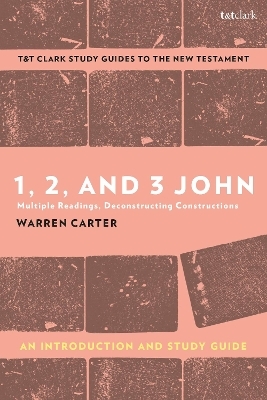
1, 2, and 3 John: An Introduction and Study Guide
Multiple Readings, Deconstructing Constructions
Seiten
2024
T.& T.Clark Ltd (Verlag)
978-0-567-70421-4 (ISBN)
T.& T.Clark Ltd (Verlag)
978-0-567-70421-4 (ISBN)
This insightful study engages the debates and interpretations of the brief and somewhat elusive writings known in the Christian canon as 1, 2, and 3 John. Chapter 1 identifies six unknowns about the origins of the three writings: authors, relationship to John’s Gospel, order, date and location of the writings, and their audiences. Chapters 2 and 3 delineate the debate concerning the relationship of these writings to a purported “Johannine tradition” and “Johannine community” in which a schism is claimed to have occurred. An alternative view recognizes that while there are some connections with John’s Gospel, it is more compelling to see the writings as independent rather than derivative, as internally not externally directed, as pastoral not polemical, and as schism-free.
Chapters 4-7 discuss important aspects of 1 John. Chapter 4 argues that its structure or organization is based on rhetorical and conceptual links among the writing’s small units. Chapter 5 reads 1 John as a pastoral “in-house” writing, rather than a polemical attack on opponents. Chapter 6 identifies the genre of I John as not a letter or sermon but an epideictic speech that seeks to strengthen the identity, commitments, and practices of its believing recipients. Chapter 7 outlines theological understandings that underpin the writing’s pastoral work.
Chapters 8 and 9 focus on 2 and 3 John as writings that provide two different approaches to itinerant teachers. The narrative fiction in 2 John presents the elder’s warning and skepticism about itinerant teachers whereas the author of 3 John, by contrast, advocates reception and welcome for itinerant teachers.
Chapters 4-7 discuss important aspects of 1 John. Chapter 4 argues that its structure or organization is based on rhetorical and conceptual links among the writing’s small units. Chapter 5 reads 1 John as a pastoral “in-house” writing, rather than a polemical attack on opponents. Chapter 6 identifies the genre of I John as not a letter or sermon but an epideictic speech that seeks to strengthen the identity, commitments, and practices of its believing recipients. Chapter 7 outlines theological understandings that underpin the writing’s pastoral work.
Chapters 8 and 9 focus on 2 and 3 John as writings that provide two different approaches to itinerant teachers. The narrative fiction in 2 John presents the elder’s warning and skepticism about itinerant teachers whereas the author of 3 John, by contrast, advocates reception and welcome for itinerant teachers.
Warren Carter is Meinders Professor of New Testament, Phillips Theological Seminary Tulsa, USA.
Introduction
Part I: Locating Readings of I, II, and III John
1. Matters We Don’t Know about I, II, and III John
2. Raymond Brown: Johannine Tradition and Community
3. Judith Lieu’s Approach: Three Autonomous Writings
Part 2: First John
4. How Is I John Structured?
5. Does I John Attack Opponents?
6. What Genre of Writing is 1 John? Epideictic Rhetoric
7. Theology in I John?
Part 3: II and III John
8. II John
9. III John
Bibliography
| Erscheinungsdatum | 22.08.2024 |
|---|---|
| Reihe/Serie | T&T Clark’s Study Guides to the New Testament |
| Verlagsort | Edinburgh |
| Sprache | englisch |
| Maße | 156 x 234 mm |
| Themenwelt | Religion / Theologie ► Christentum ► Bibelausgaben / Bibelkommentare |
| Religion / Theologie ► Christentum ► Kirchengeschichte | |
| ISBN-10 | 0-567-70421-1 / 0567704211 |
| ISBN-13 | 978-0-567-70421-4 / 9780567704214 |
| Zustand | Neuware |
| Haben Sie eine Frage zum Produkt? |
Mehr entdecken
aus dem Bereich
aus dem Bereich
Buch | Softcover (2021)
De Gruyter (Verlag)
CHF 45,90


